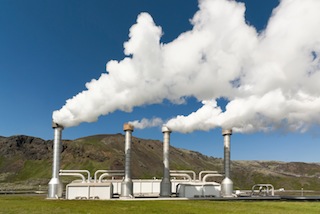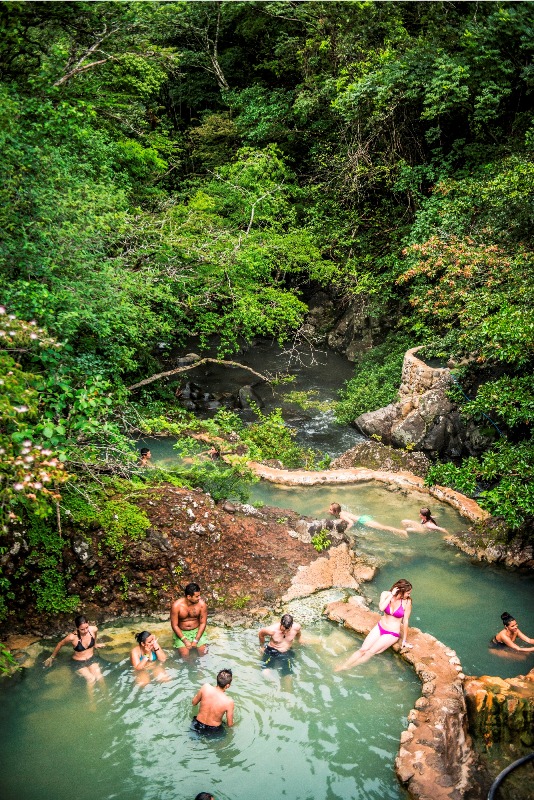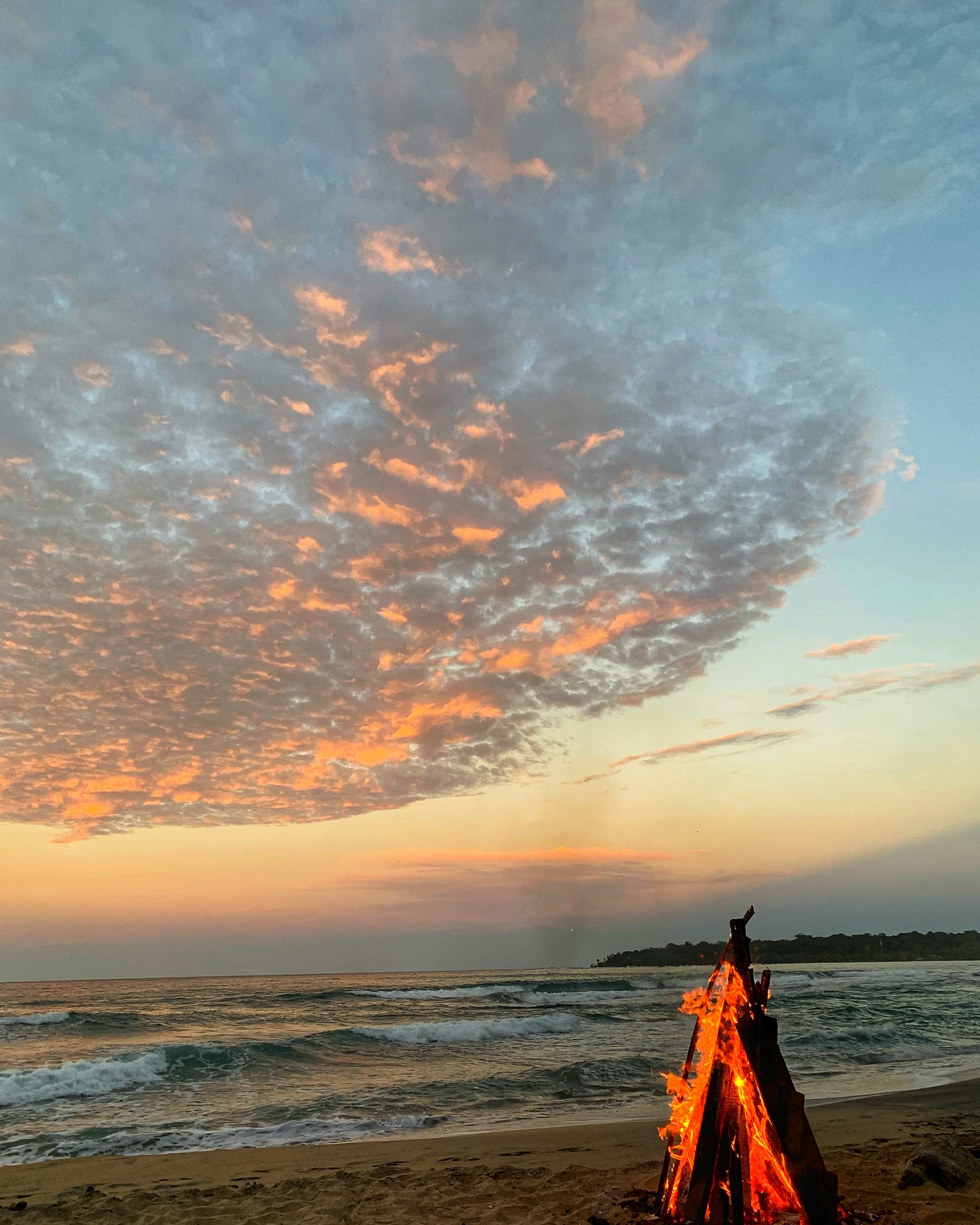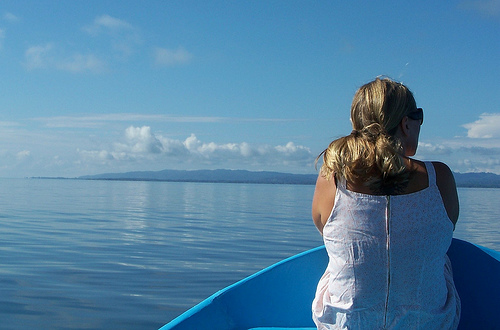 Long, fat, round pipes in dark brown and off-white snake along the rust red ground through the underbrush. They remind me of giant worms from some prehistoric setting … though not quite like that terrible 1990 movie Tremors.
Long, fat, round pipes in dark brown and off-white snake along the rust red ground through the underbrush. They remind me of giant worms from some prehistoric setting … though not quite like that terrible 1990 movie Tremors.
The pipes belong to the Pailas Geothermal Power Plant at the Rincón de la Vieja Volcano in Costa Rica’s northwestern Guanacaste region. As the world investigates alternative energy solutions that are sustainable and not harmful to the environment, Costa Rica is actively exploring its own clean energy options.
The small Central American nation currently produces more than 90% of its electricity from renewable sources, mostly hydroelectric projects. However, hydroelectric power is weather-dependent, and during the driest months of summer it is stretched to its limits when water reserves are low. Wind turbine technology is being installed in many places as one solution. The Ad Astra Rocket Company, founded by famous Costa Rican astronaut and scientist Franklin Chang, in Liberia, Guanacaste, is researching the possibility to extract hydrogen from water also to produce renewable energy.
 Costa Rica has a plentiful resource however that is largely untapped – volcanic geothermal energy. Geothermal power uses underground steam from volcanoes. The energy is harnessed by drawing hot water and steam from within the Earth’s crust, and then cooling it to move power turbines. An advantage of geothermal power is that it is continuously generated, and not dependent on weather conditions.
Costa Rica has a plentiful resource however that is largely untapped – volcanic geothermal energy. Geothermal power uses underground steam from volcanoes. The energy is harnessed by drawing hot water and steam from within the Earth’s crust, and then cooling it to move power turbines. An advantage of geothermal power is that it is continuously generated, and not dependent on weather conditions.
Being on the Pacific “Ring of Fire,” Costa Rica is bursting with volcanoes. So far, the North Volcanic Mountain Ridge in Guanacaste has been the ideal region for geothermal power generation, with its Rincón de la Vieja, Miravalles and Tenorio volcanoes. The Miravalles Geothermal Field, which consists of five plants, produces nearly 14% of the National Electrical System’s (SEN) capacity; it opened in 1994.
 The Pailas Geothermal Power Plant opened in July 2011 just outside the Pailas section of the Rincón de la Vieja National Park. The 600,000-year-old Rincón de La Vieja Volcano is the largest volcano in Costa Rica’s northwest region. “Pailas” means cauldrons, and a hike in the national park will show you why this area is so popular for geothermal energy; steam pours out of fumaroles, sulfur lagoons boil with minerals, and volcanic mud pits bubble and spit.
The Pailas Geothermal Power Plant opened in July 2011 just outside the Pailas section of the Rincón de la Vieja National Park. The 600,000-year-old Rincón de La Vieja Volcano is the largest volcano in Costa Rica’s northwest region. “Pailas” means cauldrons, and a hike in the national park will show you why this area is so popular for geothermal energy; steam pours out of fumaroles, sulfur lagoons boil with minerals, and volcanic mud pits bubble and spit.
At present, Costa Rica’s Legislative Assembly is debating a bill that would allow exploration and production of geothermal energy inside the Rincón de la Vieja National Park. Costa Rica has a law that prohibits the extraction of resources from national parks, so lawmakers would either have to modify park boundaries and add territory somewhere else to compensate, or reform the National Parks Law.
 Conservationists and officials with the Costa Rica Electricity Institute (ICE) are working to implement environmental considerations to plans for the geothermal plant to minimize impact. While Costa Rica’s volcanoes are a huge wellspring for geothermal energy, most are located within national parks, which were created to protect natural resources. For instance, the 11,000-hectare Rincón de la Vieja National Park and the neighboring Guanacaste Conservation Area have been declared a “World Heritage Site” by the United Nations. It will be a big step forward for Costa Rica if the country can create better sustainable clean energy solutions while at the same time protect the natural resources it has worked so hard to preserve.
Conservationists and officials with the Costa Rica Electricity Institute (ICE) are working to implement environmental considerations to plans for the geothermal plant to minimize impact. While Costa Rica’s volcanoes are a huge wellspring for geothermal energy, most are located within national parks, which were created to protect natural resources. For instance, the 11,000-hectare Rincón de la Vieja National Park and the neighboring Guanacaste Conservation Area have been declared a “World Heritage Site” by the United Nations. It will be a big step forward for Costa Rica if the country can create better sustainable clean energy solutions while at the same time protect the natural resources it has worked so hard to preserve.
Visit Rincón de la Vieja
 Hotel Hacienda Guachipelín is the ideal place to stay when visiting Rincón de la Vieja Volcano. The first-class ecotourism lodge is a leading adventure and nature tours center, offering canopy zip lines, canyoning, waterfall rappelling, river tubing, horseback riding, nature trails, and natural thermal springs – all on a working horse and cattle ranch.
Hotel Hacienda Guachipelín is the ideal place to stay when visiting Rincón de la Vieja Volcano. The first-class ecotourism lodge is a leading adventure and nature tours center, offering canopy zip lines, canyoning, waterfall rappelling, river tubing, horseback riding, nature trails, and natural thermal springs – all on a working horse and cattle ranch.
Hacienda Guachipelín offers guided hikes in the Pailas section of the Rincón de la Vieja National Park; you will visit the outside of the Pailas Geothermal Power Plant on this tour.












